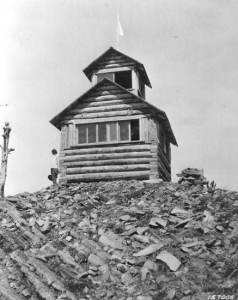Because Montana contains vast tracks of public lands, the U.S. Forest Service played an important role in the state in the twentieth century. Known for its rough-and-tumble rangers and daring smokejumpers, the Forest Service is seemingly synonymous with the rugged style of masculinity associated with Montana and the American West. Even Smokey Bear, with his bulky muscles and stern face, seems like a man’s man.

Nevertheless, women have worked for the Forest Service since its creation in 1905. Throughout the twentieth century, women’s labor was indispensable to the Forest Service, even as women consistently struggled against the agency’s masculine reputation and the belief that they were unsuited for forestry work. It was not until the 1970s and 1980s—when they moved into traditionally masculine fields like firefighting and law enforcement—that women were able to gain positions of leadership in the agency.
In the early twentieth century, women were generally limited to clerical positions within the Forest Service, and in some cases even these “feminine” jobs were off limits to them. Albert Cousins, an early forestry professional, recalled that some foresters preferred to hire men, even for office work, “the idea being that a woman clerk would not handle the ‘rough’ work required in the administration of a forest, such as assembling and shipping fire tools, rustling fire fighters, etc. Such work properly was for a ‘two fisted’ ranger.” Continue reading Work Fit for “Two Fisted” Rangers: Women in the U.S. Forest Service